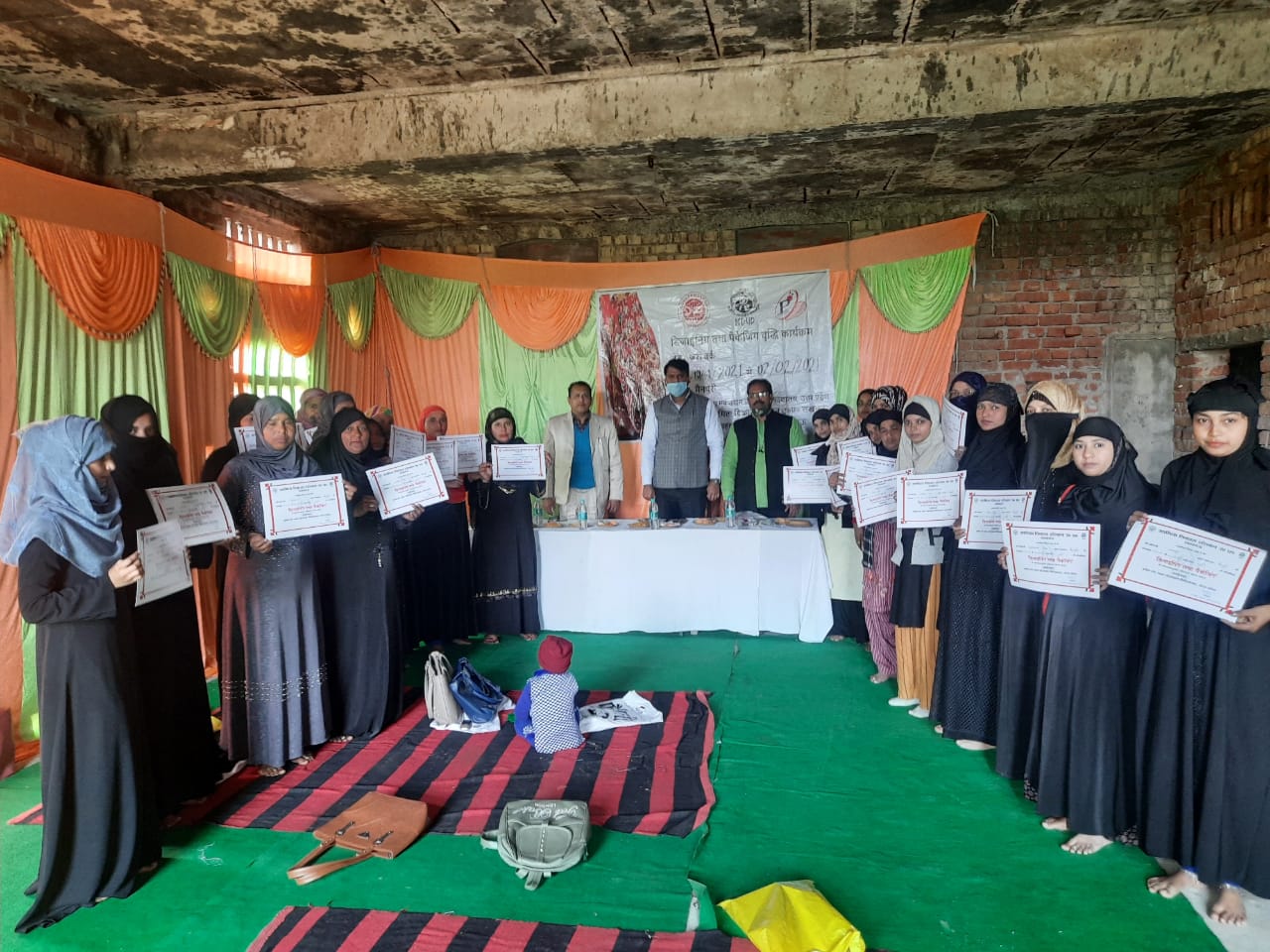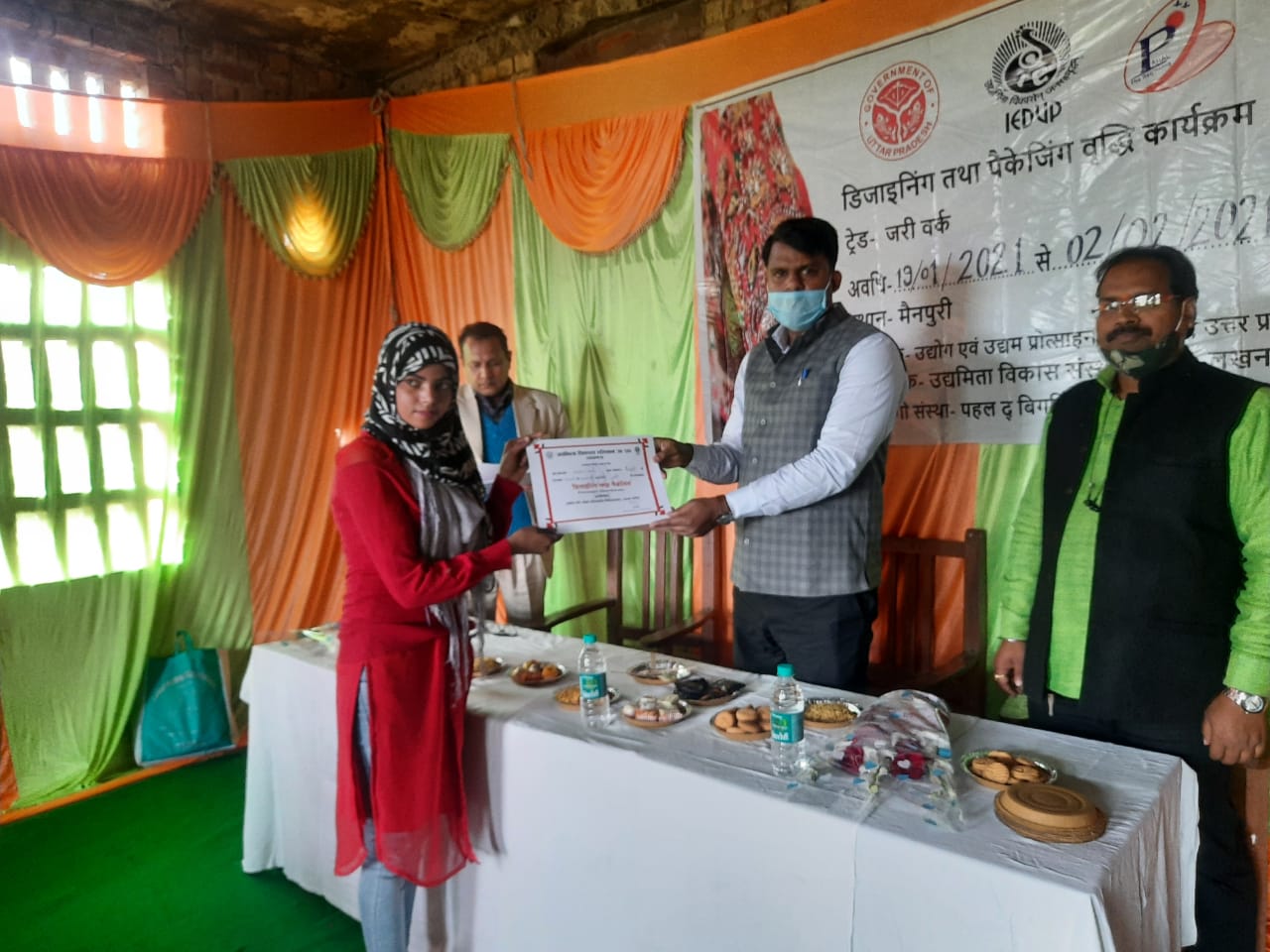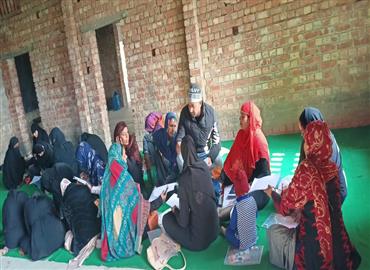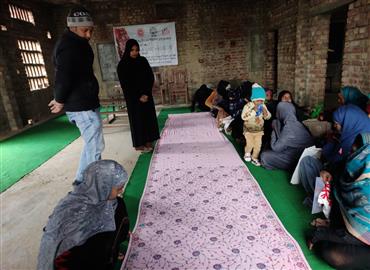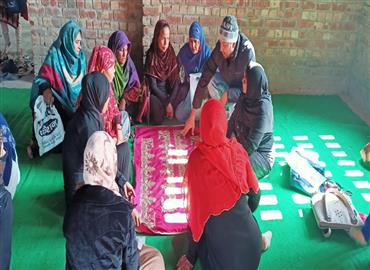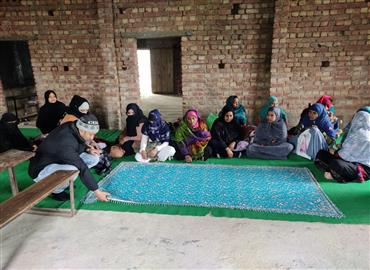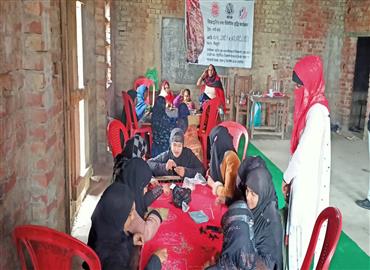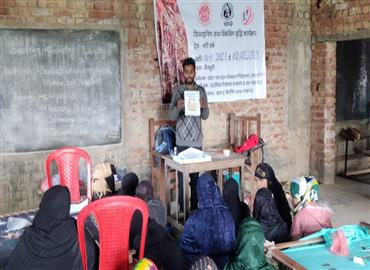ZARI WORK
Program:- Designing and Packaging,
District:- MAINPURI, Trade:- Zari Work, Training period: 15 days Place:-
MAINPURI (U.P.), Sponsor Directorate of Industry and Entrepreneurship
Promotion, Kanpur, Uttar Pradesh, Organizer
Udyamita Vikas Sansthan, Lucknow, Partner
Organization Pahal The Beginning Lucknow, Uttar
Pradesh,
Zari (or Jari) is a uniform thread traditionally made of fine gold
or silver used in traditional Indian, Bangladeshi and Pakistani apparel,
especially in the form of brocades in saris etc. This thread is woven into
fabrics, mainly silk, to create intricate patterns and elaborate designs of
embroidery called Zardozi. Zari
was made popular during the Mughal period; the port of Surat was connected to the Mecca pilgrimage route
which acted as a major factor in re-introducing this ancient craft in India. Zari is basically a brocade of tinsel
threads used for weaving and embroidery. It is made by wrapping or wrapping (covering) a flat metal strip
made of pure gold, silver or slit metallized polyester film over a core yarn,
which is usually made of pure silk, viscose, cotton, nylon, polyester, P.P.,
mono/multi filament, wire etc. Nowadays, it can be broadly divided into three
types. Real Zari, Fake Zari
and Metal Zari.
Genuine zari is made from fine silver or gold thread drawn from a
silver or gold alloy, which is flattened by passing it under rotating rollers
with uniform pressure. The
flattened silver thread is wound on a base yarn which is usually made of silk. These spools containing silk and silver
thread are further flattened for electroplating. The threads are then plated with gold by the process of
electroplating. The lustre
of the silver threads is further enhanced by passing them through a brightener. These threads are then wound on a reel.
Zari is the main decorative material in most silk sarees and
gharara. It is also used in
other garments made of silk, such as lehenga, choli, kurta and dhoti etc. In
today's era, it is used in various types of decorative items like bags,
cushions, decorative items used in the house.
Objective of the Programme:- The aim of the workshop is to
experiment and develop new products as per the needs and preferences of the
contemporary market by utilizing the traditional skills of the artisans and
introducing new techniques and technologies for improved production. The artisans of handicrafts should be
able to experiment boldly in design. For this purpose it is necessary to
provide a framework and process which gives the necessary freedom to the
designer.
Another main purpose of using packaging is to exaggerate the
product. A marketer needs to
grab the attention of a viewer to buy the product. Packaging should be able to beautify a product to add to its
visual appeal. The purpose
of product packaging is to protect the product from damage. Product packaging not only protects the
product during transit from the manufacturer to the retailer, but it also
prevents damage. With each
passing day the packaging material is becoming less and less. Apart from the traditional
paper-plastic, glass, metal packaging, people have started to explore the use
of new raw materials
It can instantly attract the attention of the audience towards a
product. You can create
interest in the customer's mind towards a product through attractively designed
packaging.
Importance of Designing/Packaging: The role of packaging has become very
important as it helps to grab the attention of the audience. Packaging can be
used by marketers to encourage potential buyers to purchase a product.Packaging
is also used for convenience and information dissemination on how to use,
transport, recycle or dispose of the package or product.
Features of Designing/Packaging It is the
process of enclosing and covering a product or object. It is a group of general activities of
product planning. Packaging is related to the designing and making of wrappers
for a product. It is an art and science.v It is a new practice and unique promotional
technique. It is a means of safe delivery of the product to the customers or
consumers.
It is necessary to provide training on packaging of handicrafts to artisans and exporters to upgrade the present packaging of their handicraft products and to do better business in India and abroad. This will help in improving their sales and livelihood along with the benefits of related fields.

